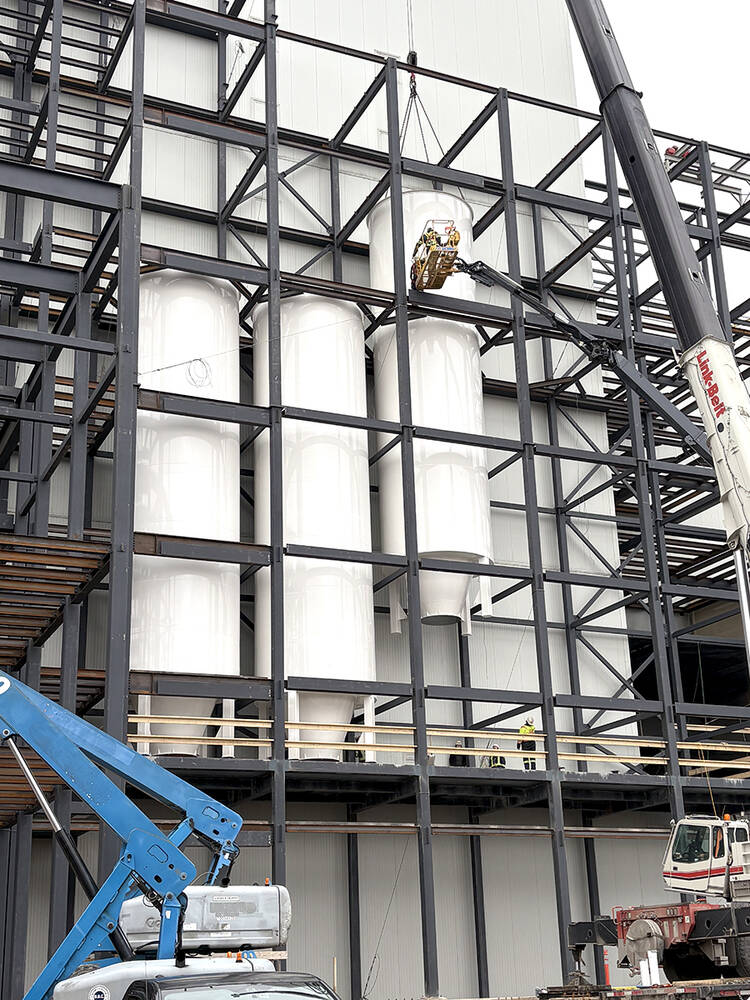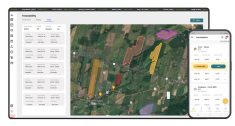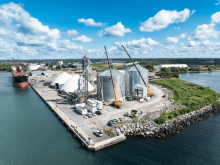Parrish and Heimbecker’s Hamilton Terminal and Mill expansion solidifies Steel Town as an agri-food port.
“With this new flour mill and expanded storage capacity, we’re not only increasing our ability to meet the growing demand for high-quality ingredients, but also ensuring a more efficient supply chain for our valued agricultural and business partners,” said John Heimbecker, P&H CEO.
The addition of a third flour mill will increase production by 50 per cent, and operation capacity will also be increased when the grain terminal’s two silos and truck pits come online in early summer.
Read Also

Claas brings 1000 Series SP forage harvesters to Canada
In mid-August, Claas unveiled its new line of Jaguar forage harvesters at an event in Visalia, California, deep in the heart of that state’s dairy region.
Why it matters: With P&H’s expansion, the Port of Hamilton agri-food cluster now represents 31 per cent of its overall cargo and supports 105,000 provincial jobs.
During a Dec. 17 media tour, Bruce MacIntyre, president and chief operating officer of P&H Milling Group, explained that the Port of Hamilton location allows for sustainable delivery of 25,000 tonnes of Western grain per boat and helps reduce reliance on trucking, easing transportation pressure.
“This partnership between HOPA (Hamilton-Oshawa Port Authority) and Parrish and Heimbecker is such a wonderful example of the growth of the ag culture and food processing sector here, locally and across our region,” said Larissa Fenn, HOPA’s vice president of corporate affairs.
Ian Hamilton, HOPA president and CEO, said the expansion reflects the strength of the agri-food cluster in Hamilton and reinforces the importance of building a resilient supply chain for Ontario farmers and food manufacturers through strategic investment in transportation and industrial infrastructure.
MacIntyre said that the commercial baker, biscuit, and cracker sector within a 100-kilometre radius of the facility utilizes 95 per cent of the flour produced at the Pier 10 operation.
The terminal transports 1.3 million tonnes of grain annually, making logistics crucial for the smooth offloading of Western Red Spring wheat for flour production and shipping soybeans and corn overseas.
“We turn our space close to 20 times per year,” said Jay Fretz, P&H Hamilton terminal manager. “Fifty per cent of our crops come in October, November and December (corn and soybean) and 50 per cent from April to the end of summer (mostly corn and wheat).”
At 2,000 tonnes an hour, it takes approximately 14 hours to unload and eight to 10 hours to load a boat. “Lakers” hold 30,000 tonnes, and sea-faring ships, or “Salties,” hit capacity at 20,000 tonnes before topping up in Montreal and sailing mainly to Ireland and the United Kingdom.
The facility’s two existing domes hold 35,000 tonnes each, providing enough space for a 30,000-tonne ship to unload, and each cement silo holds approximately 6,000 tonnes, equivalent to a single hold on the boat.
Fritz said the two new silos would handle essential feed ingredients, such as soymeal, distillers dried grain and flour mill wheat.
“Two truck (pits) can’t keep one scale full; next fall, I can have these four pits (two existing and two new ones) feeding ship loading directly, so I’m not borrowing grain from storage in the daytime,” said Fretz. “We’ll have more daytime truck capacity direct-to-ship, and if those new silos are full – there’s another 18,000 tonnes (from trucks) available to run through either scale.”
The increased available capacity should result in more efficient load times, reducing wait times by approximately eight to 10 hours. If Fretz had a magic wand, he’d like to see an additional crane to load and offload from each end of the ship, minimizing movement to access holds.
Given P&H’s incredible growth at Pier 10 since the grain terminal operations began in 2008 and mill construction in 2017, Fretz could see his wish come true sooner rather than later.
Either way, the partnership between P&H and HOPA continues to provide stability for Ontario farmers and Hamilton’s 120 food ingredient companies.
“They all need a supply of quality, safe food, and with our systems here at Hamilton, we’re able to do that; we’re able to get quick turnaround to the customers,” said MacIntyre.
“It’s really been a great success story, and we see a bright future for this site and our company.”















